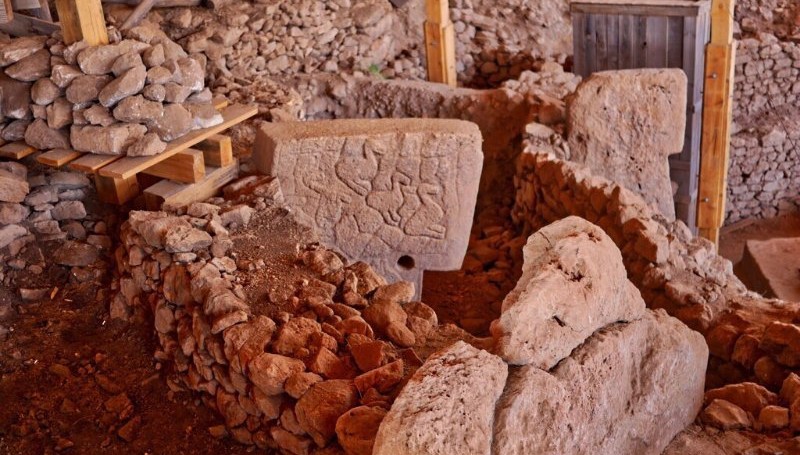Stone Figures of Gobeklitepe
The gigantic T-shaped obelisks of Gobeklitepe overlie the magnificent sculptures of spooky, bizarre and even scary beings of nature.
The most common animal figures are snakes, wild boars, cranes and foxes. Although not so frequent, gazelles, wild oxen, wild sheep, lions, scorpions, lizards, spiders and ants are also depicted. There is also a figure of bear and hyena. There are also bird species such as flamingos, vultures and flightless birds. In addition to T-shaped stones, three-dimensional animal sculptures were also found. These are wild boars, wolves and wild oxen and three-toothed predators. The sculptures are in the Urfa Archeology Museum.
The reason why so many animals are pictured has not yet been solved. What is interesting is that most of the animals depicted are not amicable, they are wild and damaging animals. According to one view, they are drawn to intimidate people who will enter the temple area. At that time, the Hunter and collector tribes knew what they were confronted with when they saw these animals. But at the time when this temple was built, people started to settle down, so there might be aimed something else here.
In the south of Europe, the cave paintings belonging to the Paleolithic period attract more beauty and peace. However, the cave paintings in America resemble with their frightening figures in Gobeklitepe. There are seven strange birds carved into the main rock in which the obelisk is located. Because of their different beaks and sharp teeth, they resemble more dinosaur pups. It seems to be a flightless bird. These birds are thought to be dodo birds that have been extinct for 300 years. There are no other birds in the world similar to these birds. And it is known that these birds, hunted until they are extinct, lived only on the Mauritius Islands. This suggests that those who built Gobeklitepete could have seen these birds during their travels.
Genetic research aimed at finding the origin of cereal production suggests that 68 grain species used in the production of bread, pasta and beer are wild einkorn grown at the foot of Karacadag (which was a Volcanic Mountain), 80 km from Gobeklitepe. It is thought that this grain has become domesticated in this region where mankind has the oldest monumental structures. The grain may have been domesticated here to meet the nutritional needs of those who came to work in Göbeklitepe or who came to visit this huge temple area.
The idea of coming back here again and again shows that the settled life may have started in Gobeklitepe. This is a turning point for humanity and has caused the birth of civilization 12000 years ago.

